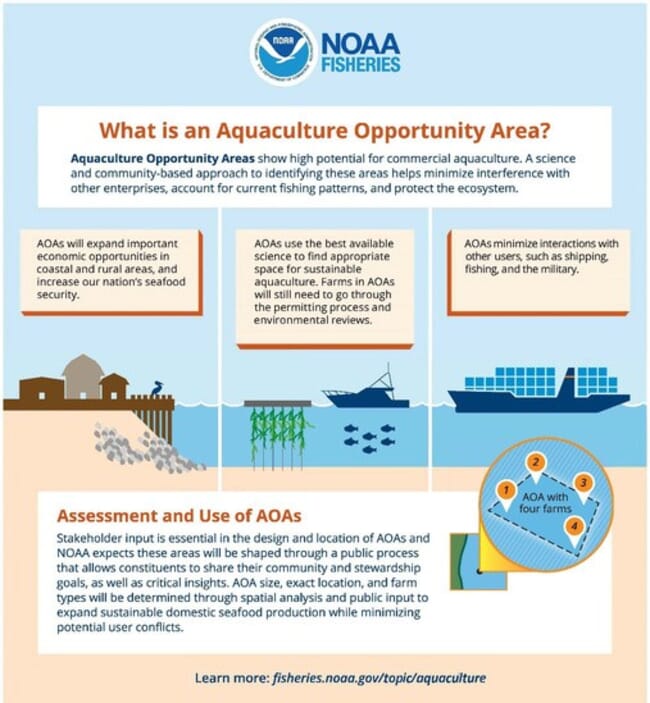
Each Aquaculture Opportunity Area will be permitted to host three to five aquaculture installations.
The two regions – the first of 10 due to be designated – were selected based on the already available spatial analysis data and current industry interest in developing sustainable aquaculture operations in the region.
“Naming these areas is a big step forward,” said Chris Oliver, assistant administrator for NOAA Fisheries. “The creation of Aquaculture Opportunity Areas will foster the US aquaculture industry as a needed complement to our wild capture fisheries. This type of proactive work creates opportunities for aquaculture farmers and maintains our commitment to environmental stewardship.”
The designation has been welcomed by offshore finfish farming pioneer, Innovasea.
“Today’s announcement by NOAA is an important signal that the United States is serious about allowing offshore aquaculture to establish itself as an industry and help complement our capture fisheries by producing seafood in a safe, sustainable manner,” said David Kelly, CEO of Innovasea.
Aquaculture Opportunity Areas were called for in the May 2020 Executive Order on Promoting American Seafood Competitiveness and Economic Growth. They are defined as geographic areas that have been evaluated for their potential for sustainable commercial aquaculture. Selected areas are expected to support multiple aquaculture farm sites of varying types including finfish, shellfish, seaweed, or some combination of these farm types. To identify each area, NOAA will use scientific analysis and public engagement to highlight spaces that are environmentally, socially, and economically appropriate for commercial aquaculture.
"While NOAA has selected the regions for these first Aquaculture Opportunity Areas, the exact locations will be identified based on best-available science, including data-driven siting analyses using hundreds of data layers of ocean conditions and uses,” said Nicole LeBoeuf, acting assistant administrator for the National Ocean Service. “Stakeholder input is also essential to ensure the Aquaculture Opportunity Areas are sited in the best locations for aquaculture and to avoid conflicts with other industries or environmental harm."

There is no predetermined size for an Aquaculture Opportunity Area. Each of the first two areas may accommodate approximately three to five commercial aquaculture operations, but this will vary depending on the specifics of the location. The size and shape of operations in each area will be determined as part of the Aquaculture Opportunity Area identification process. During this process, NOAA will work with federal and state partners, tribes, and interested stakeholders to determine the appropriate size of each. This will include using best available science to consider aspects such as:
- Types of species likely to be cultivated
- Maximum number and configuration of operations within an area
- Maximum annual farm production based on carrying capacity modeling
- Monitoring considerations
“Along with the advanced spatial analysis, public input is vital to this process” said NOAA office of aquaculture director Danielle Blacklock. “In the coming months and years we plan to conduct outreach, requests for information, and listening sessions to allow our stakeholders to share their insights into the creation of these opportunity areas.”


